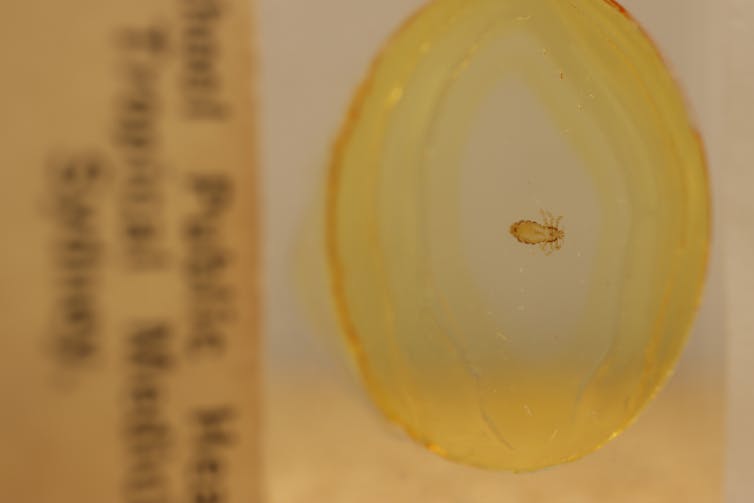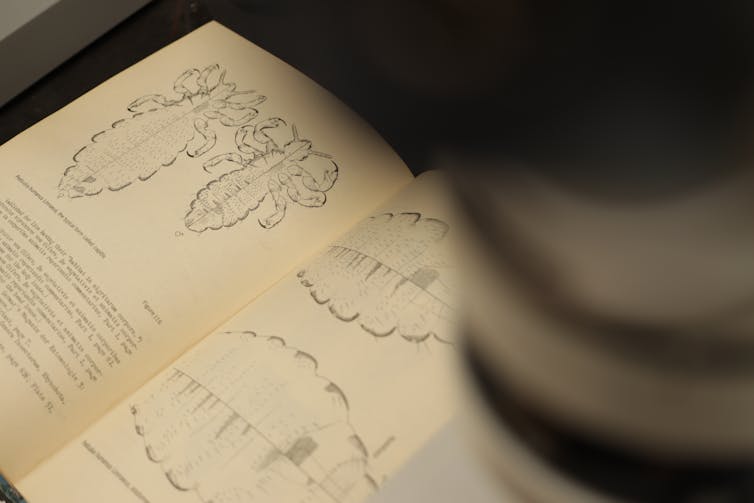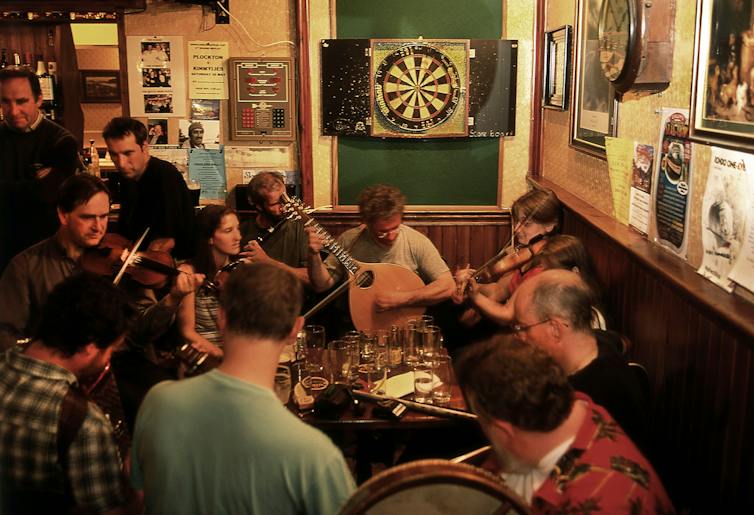Wrangling head lice, and the children they infest, must be up there with the most challenging duties a parent or carer has to face.
Primary school-aged children, who seem to always be in close proximity to one another, are the most susceptible to lice.
But by exploiting the screen-sharing and selfie-taking habits of tweens and teens, these little parasites are finding more ways to spread.
And they’re no easier to kill off.
What are head lice and nits?
Head lice, known by their scientific name Pediculus humanus capitis, are tiny insects that are only found among the hair on a human’s head. They’re not found anywhere else on the planet.
They scuttle up and down shafts of hair. They have perfectly designed claws, that look a little like carabiners, allowing them to move about how a rock climber uses guide ropes. They’re agile on our hair, but clumsy once they’re off.
They don’t jump or fly. They move from head to head through direct physical contact.

Unsplash/Priscilla du Preez
Our hair is their home but our blood is their food. Head lice feed on the scalp and have specially designed mouth-parts to suck out blood up to a half dozen times a day. It means child with an average sized infestation of head lice may give up less than 0.01 ml of blood per day.
When it comes time to lay eggs, that we affectionately refer to as “nits”, the lice don’t want the more than 100 or so eggs they can produce in a lifespan just rolling off our heads. They “cement” their eggs to the shafts of hair. It’s some of the best “superglue” you can find!
Once laid, the eggs will hatch within a few days. Within a week, the lice are ready to lay more eggs. The adult lice can live for up to a month if conditions are right.
My child has head lice, should I be worried?
While closely related lice have been implicated in the spread of some of the most dangerous and deadly pathogens to human health, head lice are much more benign. They’re annoying but won’t make us sick.
Their bites may cause an itchy irritation to our skin. Our bodies react to the saliva they inject when they bite. In the same way we all vary in our reaction to mosquito bites, the same differences result from lice bites. Some people will hardly notice them, others will be driven wild with itchiness.

A/Prof Webb/NSW Health Pathology
Health authorities in Australia do not consider head lice a risk of transmitting pathogens that are harmful to humans.
There is no doubt they’re annoying but perhaps the greatest health threat of head lice is to the health and well-being of parents responsible for their eradication.
Here’s how you beat ‘indestructible’ head lice
Do we really need chemicals?
“Just kill them all, whatever it takes” is a common refrain among those trying to rid their children of the latest round of infestation.
There is a wide range of products available at your local pharmacy to treat head lice. These products should be registered with the Therapeutic Goods Administration and be assessed as both safe and effective to use. Most of these products are insecticides that kill the lice on contact.
However, evidence seems to be mounting that some of these insecticides aren’t working as well as they once did. Resistance in head lice to commonly used products may be the result of their excessive or incorrect use. The more lice that escape a treatment, the greater the chances of them developing resistance in much the same way bacteria are developing tolerance and resistance to commonly used antibiotics.
Head lice are still susceptible to alternative approaches. Products derived from Australian plants, such as tea tree or eucalyptus, may be better than insecticides. But these are still chemicals.
All these products should be used in accordance with the directions for safe use.
A range of products are marketed as “repelling” head lice. But there is little evidence these are a reliable way to avoid picking up head lice from your friends or family.

A/Prof Webb/NSW Health Pathology
Is there a chemical-free approach?
A strong recommendation by health authorities in Australia is to skip the sprays, creams, and lotions and embrace the “conditioner and comb” or “wet comb” method and physically remove the lice.
This is not just good advice for those not wanting to avoid chemicals, it overcomes having to deal with insecticide-resistant lice.
The steps in this process are relatively straight forward.
To immobilise the lice, apply hair conditioner to the child’s damp hair. Then use a fine toothed “lice comb” to systematically work through the hair and remove adult lice. Regularly wiping the comb on tissues or paper towel will reveal the dispatched lice.
This approach works but must be repeated twice, about a week apart, to break the life cycle of the head lice.
Head lice eggs are less susceptible to treatment, no matter what treatment you choose. As all the eggs will hatch within a week or so, repeating treatments again and targeting the adult lice before a new batch of eggs is laid will provide the best results.
The secret to effective eradication of the infestations is patience and persistence. Perhaps a new practice in mindfulness?
Curious Kids: what’s the point of nits?!
Will our household ever be free of them?
Head lice are a normal part of life for young children. It doesn’t matter how clean and tidy your house is, you’ll inevitably have to deal with an infestation.
Frequent washing of bed sheets, towels, and vacuuming floors won’t keep them away. Head lice don’t survive long out of our hair so you’re unlikely to pick them up from carpet, furniture, or even sharing hats. They don’t float around in swimming pools either.
If a child has persistent infestations and has an adverse reaction to the head lice, consult your local health professional. There are some alternative options, including some medications, that may also assist in reducing the bite reactions as well as the infestation itself.




